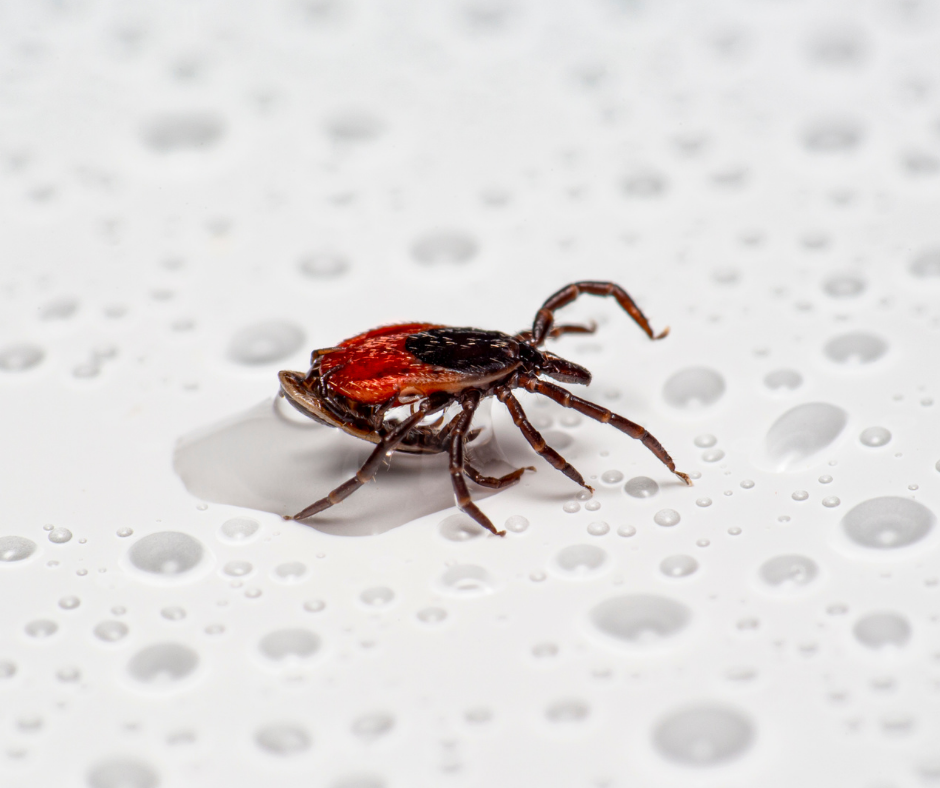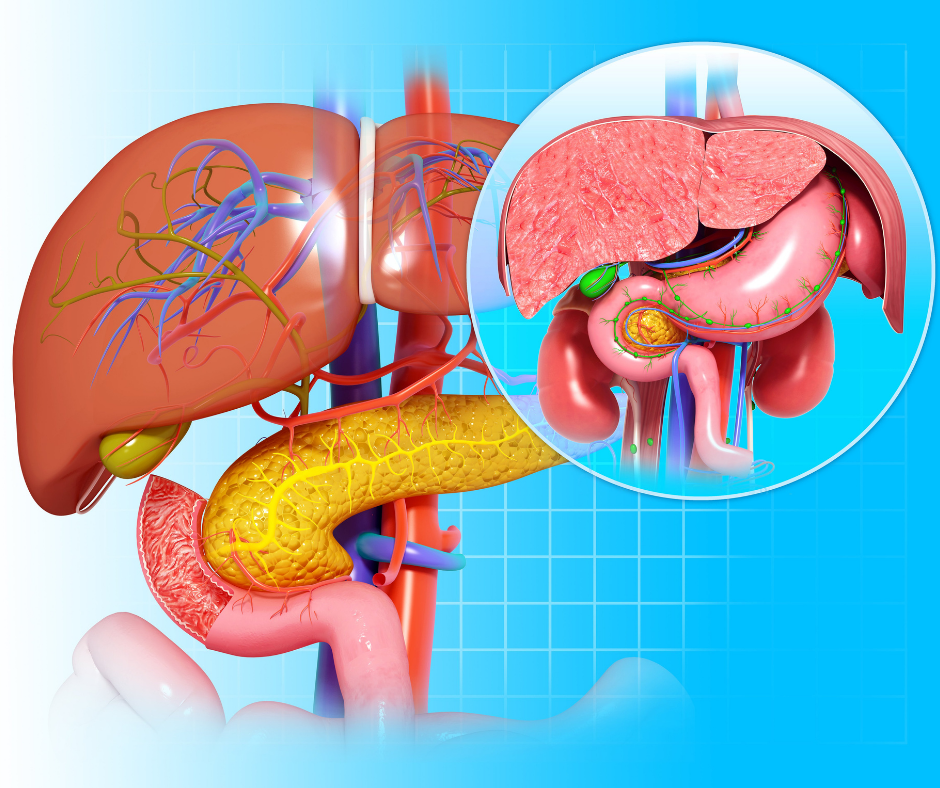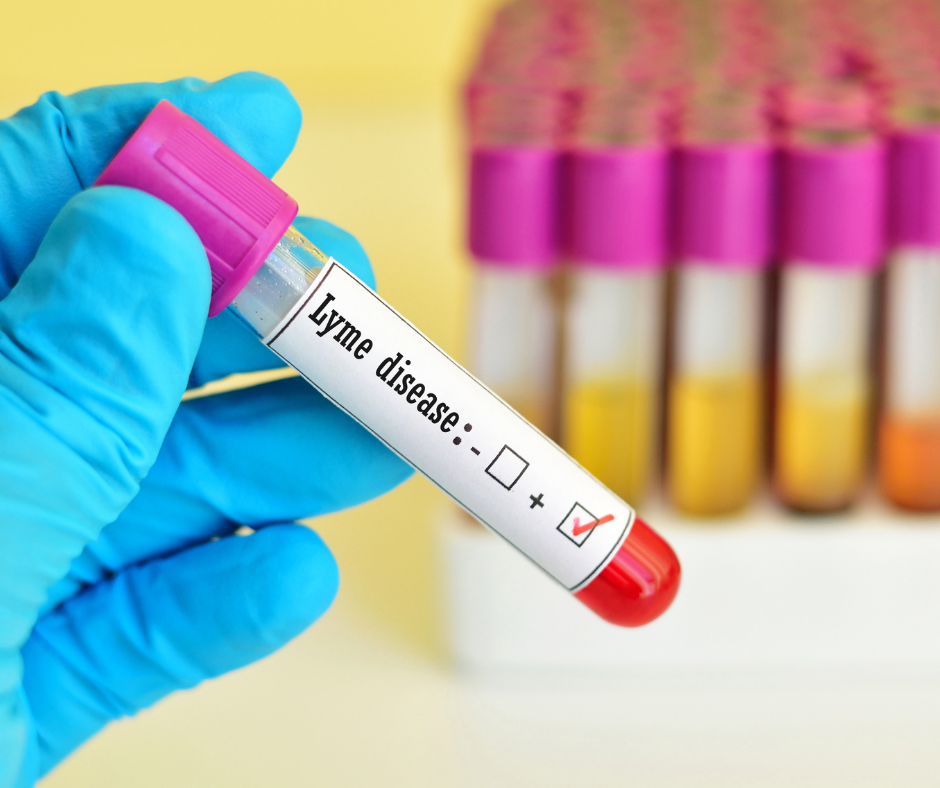By Claire Bacon, ACN, CNC
As a general rule, Lyme infection is relatively rare in the Southeast. Historically, Lyme has been most associated with the Northeastern US. Lyme is generally not on the radar of doctors in our area. However, the prevalence of mysterious immune syndromes is on the rise. Oftentimes, these complex syndromes don’t respond well to the typical medical therapy. Our position is that potentially, Lyme and/or coinfections could be an underlying factor of all chronic conditions. With continued travel cross-country, Lyme may be less constrained to a geographic region.
Surprisingly, it may not always be due to a tick bite. The typical coinfections that occur with Lyme could also occur from dairy consumption and fleas from household pets. Maybe you and your doctor should think beyond some of these preconceived notions about infection?
Physiology of Lyme or Coinfection Effects
Health practitioners are slowly coming to realize that Lyme infection does not exist on its own. Lyme tends to occur alongside many types of bacteria and parasitic coinfections. Common coinfections include: Bartonella, Ehrlichia, Anaplasma, Rocky Mountain Spotted Fever, and Klebsiella. Others may include:
- E. coli,
- cholera,
- Pseudomonas,
- Salmonella,
- Shigella,
- Yersinia,
- Heliobacter and/or
- Campylobacter.
The above bacteria work together (have synergy) to reduce the effectiveness of the immune system. Quite literally, a single treatment that targets one species does not work. The impact of multiple organisms is not additive. They are synergistic. They create effects that are more than the sum of the parts. We have to understand the total effects of what multiple bacteria are doing. As a result, we can address the full cytokine cascade. Cytokines cause many inflammatory processes. For instance, they may cause weakness, seizures, or hormonal disruption. They can even cause rage or depression.
Ticks often carry Lyme, whereas fleas may carry Bartonella. Both infections can result in collagen breakdown. These infections attack red blood cells and endothelial cells. As a result, anemia and inflammation are common. Once a body site inflames, the immune system sends CD34+ cells to repair the damage. But the problem is, the Bartonellas feed on CD34+ cells. They take advantage of high inflammation areas. Babesia also affect the red blood cells. They can worsen fatigue, breathlessness, and weakness. Because of this, symptoms can go on for years without being properly understood.

Vectors of Infection in the Body
Lyme disease is the most common vector-borne disease in the US. Commonly, Lyme is caused by Borrelia species. It transmits to humans through the bite of infected ticks. Click here for what-to-do after a tick bite. If you can extract the tick, you may like to send it off for testing.
| Tick Check East Stroudsburg University Innovation Center 562 Independence Road East Stroudsburg, PA 18301 1 (866) 713-8425 Cost $100-200/tick. Up to 5 can be tested together at no additional cost. | University of Massachussetts 101 Fernald Hall University of Massachusetts Amherst, MA 01003 (413) 545-1057 Cost: $50-200/tick for species identification and testing. |
Did you know, Bartonella and various mycoplasmas can be transmitted via fleas and cats to their owners through bites. In addition, mycoplasmas are common in cow’s milk and goat’s milk because they are resistant to pasteurization. Surprisingly, mycoplasma can also be present in blood supplies. Honestly, mycoplasmas are so prevalent, they probably come in a million ways we don’t yet understand!
Body Systems Affected by Lyme and Coinfections
Babesias hide in the cells of the spleen and liver. Normalizing proper functions in the spleen and liver reduces habitat for the bacteria. If the spleen is removed or damaged, a previously unknown infection becomes acute very rapidly.
The weaker the immune system, the more likely you may become infected. It may be more serious, too. Building immune status allows the body to do what it does best – to use elegant mechanisms to control and clear infection. The immune system creates long-lasting antigens, which eliminates bacteria fully. And it prevents them from coming back.
Examples of bacterial synergy:
- An infection with Anaplasma paves the way for infection with Babesia, and vice-versa.
- An Erlichia infection, when combined with Bartonella, Babesia or a Hemoplasma, is often more severe than would be expected alone. Erlichia tend to infect neutrophils (the most prevalent type of white blood cell).
- Hemoplasmas attract to red blood cells.

Common Symptoms
In general, mycoplasmas are thought to infect the respiratory and genitourinary tract. Recently, they have been discovered in other places, too. For instance, they can cause gastritis, coagulant vascular issues, or certain cancers. Secondly, they have been found in cases of seizures, rheumatoid arthritis, and tinnitus. Thirdly, they can also cause myocarditis, pericarditis, heart attack, and neurological issues. Infertility and miscarriages might be signs of infection, too. Other symptoms may include:
- thrombotic thrombocytopenic purpura,
- Raynaud’s phenomenon,
- vasculitis,
- abdominal pain,
- pancreatitis,
- impaired kidney function, rashes and hives,
- prostaglandin imbalance, and/or
- rhabdomyolysis.
The list goes on and on! Basically, mycoplasmas can be involved in any kind of symptomatic process.

Common Nutritional Deficiencies
Mycoplasmas tend to scavenge & deplete:
- amino acids, adenine, ribose,
- B vitamins and choline,
- zinc, phosphorus, magnesium, selenium,
- calcium, copper, lipoic acid,
- fat soluble vitamins A and E, and essential fatty acids,
- phosphatidyl serine, triglycerides, and cholesterol.
If you have been having chronic deficiencies, you may like to look deeper. You may find evidence of potential infections.
In our office, we like to use the Cyrex Array 12 blood panel. It can identify common pathogens. These might include yeast, mold, Lyme, Babesia, and other bacteria. We also can order a Comprehensive Stool Analysis. Speak with Dr. Bob or Claire if you’re interested in testing.

Typical Treatments
If you visit your medical doctor, he will typically prescribe antibiotics. These can be helpful in the short-term, but do not clear coinfections fully. As a result, you may find yourself back to square one in a few months. For instance, helpful antibiotics might include:
- Azithromycin,
- erythromycin,
- clindamycin,
- doxycycline,
- tetracycline, and/or
- cethromycin.
Holistic Support from Natural Therapies
Our strategy is always to support the whole body. For infections, we focus on how the immune system works, along with spleen, liver and the lymph. A good immune system can clear a variety of infections without having to target just one thing. Because of herbs’ natural synergies, we can achieve greater results than with just one thing. Studies show benefits from a wide variety of herbs:
- Chinese skullcap (root) and Motherwort for seizures and episodes of rage.
- Central nervous systems herbs: Greater celandine, Lion’s mane, Kudzu root.
- Psychologically calming: Pasque flower tincture, Coral root.
- Japanese knotweed or EGCG for endothelial cell inflammation.
- Colloidal silver for gram-negative bacteria.
- Poke root protects the spleen and lymph nodes.
- NAC protects the red blood cells.
- Cordyceps to inhibit cytokine cascade.
- Vitamin E and luteolin are also helpful for endothelial inflammation.
Favorite Supplements:

Oftentimes, cycling through a variety of immune-supportive herbs is necessary. This “keeps the microbes guessing.” We don’t like to stay on any one product too long. Rather, we prefer to change it up after a month or two at most.
- AllergCo – has Chinese Skullcap, Albizia, and Black Cumin Seed (Nigella sativa). Our best blend during allergy season! Very effective against the inflammatory cascade.
- Andrographis Complex – is beneficial because of its broad-spectrum antimicrobial, anti-inflammatory, and immune-modulating properties. Andrographis, Holy Basil, and Echinacea are among the best herbs to stimulate a healthy immune response to combat chronic infections.
- Immuplex – is our best multivitamin for general support. Contains Vitamin A, Zinc, Selenium, and Iron, along with spleen, liver and thymus extracts.
- Cataplex E – contains Vitamin E and Selenium from natural foods. These can ease inflammation in the endothelial lining, as well as support thyroid and heart health.
- Herbavital – has Japanese knotweed (source of Resveratrol), Milk thistle, Korean ginseng, Grapeseed extract, and Ginkgo leaf. It’s an herbal multivitamin, as it is helpful for microcirculation, antioxidant, and anti-aging support.
- Spleen PMG – encourages healthy growth and repair to spleen tissue. As a result, we can support the “memory center” of the immune system. This helps proper recycling of red blood cells within the spleen.
- Thymex – is best for anything related to ear, nose, or throat immune conditions. It clears the lymph and maintains functional drainage systems.
Other Support Systems:
People with chronic infections have often been struggling for years. As a result, they are frustrated and confused. They feel isolated from people who don’t understand. If you have Lyme, don’t underestimate the value of having hugs! You need to have caring contact with loving people on a regular basis. A good support system is the best! Also, speak up if you need a safe place. Do you have a way to express suppressed anger or other emotions? Swedish massage can be helpful, too.
Whatever you do, know there is a whole world of helpful techniques out there. The short answer is, the immune system is everything! Don’t ever give up!
Like this article? Keep reading…
If you liked this article, we’ve got several more along the same lines. Take a look…


